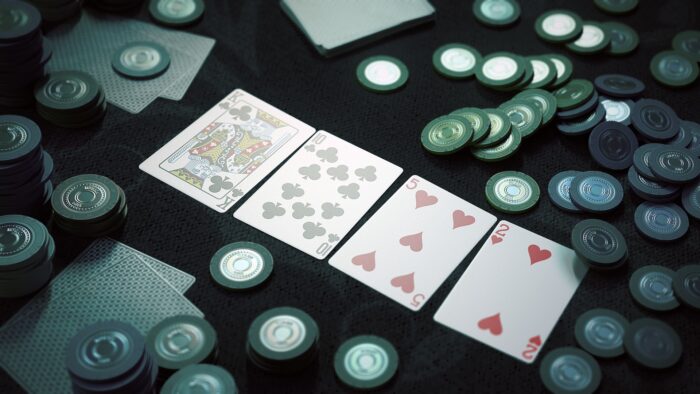The carefully orchestrated sound environment in establishments represents one of the most sophisticated psychological manipulation tools in modern entertainment. Every chime, musical phrase, and ambient noise serves a calculated purpose designed to influence behavior, extend playing sessions, and maximize player engagement.
Sound designers and behavioral psychologists collaborate extensively to create landscapes that subtly alter perception and decision-making processes. These techniques operate below conscious awareness, making them particularly effective at influencing player behavior without triggering defensive responses.
Understanding these manipulation strategies empowers players to recognize when environmental factors influence their decisions. Polish enthusiasts, like players worldwide, encounter these sophisticated psychological techniques across various platforms and physical venues.
The Science Behind Casino Sound Design
Neurological research reveals that specific frequencies directly impact brain chemistry and emotional states. Establishments leverage these findings to create environments that promote relaxation, excitement, and continued engagement through carefully calibrated soundscapes.
Dopamine release patterns respond predictably to certain cues, particularly those associated with winning or near-miss experiences. Sound designers exploit these biological responses by incorporating elements that trigger reward anticipation even during losing streaks.
Temporal perception becomes distorted in environments with specific characteristics. Venues deliberately eliminate time-reference sounds like clocks or natural cues, replacing them with timeless musical loops that obscure the passage of hours.
Ambient Music and Mood Manipulation
Background music in establishments follows precise psychological principles designed to maintain optimal arousal levels. Tempo, key signatures, and instrumental choices combine to create emotional states conducive to extended play sessions.
Mid-tempo compositions between 72-108 beats per minute mirror resting heart rates, creating subconscious comfort that encourages longer stays. Faster tempos increase excitement during peak moments, while slower passages provide calming intervals that prevent overwhelming stimulation.
Key selection plays a crucial role in emotional manipulation, with major keys promoting optimism and minor keys adding subtle tension that maintains engagement. These musical elements work together to create emotional roller coasters that mirror the experience itself.
Sound Effects and Reward Psychology
Victory sounds represent the most carefully crafted elements in environments. These celebratory chimes and musical flourishes trigger immediate dopamine release, creating powerful psychological associations between play and pleasure.
Near-miss cues deserve particular attention for their manipulative potential. These sounds suggest proximity to victory even during losses, encouraging continued play through false hope and reward anticipation that keeps players engaged despite negative outcomes.
Volume dynamics create artificial excitement peaks that coincide with climaxes. Sudden volume increases during bonus rounds or special features amplify emotional responses, making modest wins feel more significant than their actual monetary value.
The Role of Silence and Absence

Strategic silence periods serve important psychological functions within design. Brief quiet moments create anticipation and allow players to process previous experiences while building tension for subsequent actions.
Absence of external references eliminates real-world connections that might prompt players to consider time, responsibilities, or financial limitations. This isolation creates bubble environments where normal decision-making processes become compromised.
Modern platforms like vulkan vegas casino online demonstrate a sophisticated understanding of psychology through their carefully designed soundscapes that balance engagement with user experience. However, awareness of these techniques remains essential for maintaining conscious control over decisions.
Cultural Elements and Regional Preferences
Design adapts to cultural preferences and regional musical traditions to maximize psychological impact. Polish players may encounter familiar musical elements or culturally resonant sounds that create subconscious comfort and familiarity.
Traditional folk music influences appear subtly in soundtracks, creating emotional connections that transcend conscious awareness. These cultural cues tap into deep-seated memories and associations that enhance overall appeal.
Language-specific elements, including native-language voice prompts or culturally appropriate sound effects, increase player comfort and reduce psychological barriers to extended play sessions.
Time Distortion Through Manipulation
Continuous loops eliminate natural time markers that normally help humans track temporal progression. Environments replace these biological cues with artificial soundscapes that create temporal disorientation and encourage extended sessions.
Repetitive musical phrases become hypnotic through subtle variations that maintain interest while avoiding conscious recognition of repetition. This technique creates trance-like states where time awareness diminishes significantly.
Seamless transitions between different phases prevent natural stopping points that might encourage session breaks. These smooth progressions maintain psychological momentum and discourage interruption of activities.
Volume Psychology and Attention Control
Dynamic volume control guides player attention toward specific elements while diminishing awareness of environmental factors. Louder sounds during winning moments create positive reinforcement, while quieter periods maintain focus on interfaces.
Frequency masking techniques hide potentially distracting environmental sounds behind designed elements, creating isolated psychological spaces that minimize external interruptions and maintain concentrated focus on activities.
Spatial positioning creates immersive environments that surround players with carefully crafted soundscapes. These three-dimensional experiences increase psychological immersion and reduce awareness of physical surroundings.
Recognition and Resistance Strategies
Conscious awareness represents the most effective defense against manipulation techniques. Players who understand these psychological strategies can maintain better control over their decisions and resist subconscious influence attempts.
Personal alternatives, such as using headphones with preferred music, can counteract environmental manipulation while maintaining enjoyment. This strategy allows players to enjoy activities while avoiding psychological influence from designed soundscapes.
Regular breaks interrupt induced psychological states and restore normal temporal awareness. Setting reminders or alarms can help maintain conscious control over session length despite environmental manipulation attempts.
The Future of Psychology in Entertainment
Technological advances continue expanding manipulation possibilities through personalized soundscapes based on individual psychological profiles. These developments raise important questions about ethical boundaries in entertainment design.
Artificial intelligence applications enable real-time adjustments based on player behavior patterns, creating increasingly sophisticated manipulation techniques that adapt to individual psychological responses.
Regulatory discussions address the need for transparency in manipulation techniques, with some jurisdictions considering disclosure requirements for psychological influence methods used in entertainment environments.
Understanding casino sound design reveals the sophisticated psychological techniques employed to influence behavior and extend play sessions.
Recognition of these methods empowers players to make more conscious decisions while maintaining awareness of environmental factors that might compromise rational judgment.
By developing this awareness, enthusiasts can better protect themselves from subtle manipulation while still enjoying their preferred entertainment activities.

